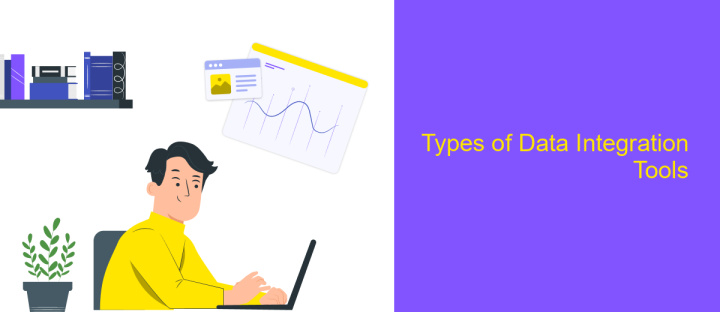Uses of Data Integration
Data integration is a crucial process in today's data-driven world, enabling the seamless combination of information from various sources to provide a unified view. This practice not only enhances decision-making but also boosts operational efficiency across industries. In this article, we explore the diverse applications of data integration, highlighting its significance in business intelligence, healthcare, finance, and more.
Introduction
Data integration is a critical process in the realm of information technology, enabling the seamless combination of data from various sources into a unified view. This process is essential for organizations aiming to enhance their decision-making capabilities, improve operational efficiency, and gain a competitive edge in their respective industries. By integrating data, businesses can ensure that they have access to accurate, consistent, and up-to-date information, which is crucial for strategic planning and execution.
- Enhanced decision-making through comprehensive data analysis
- Improved operational efficiency by streamlining data workflows
- Increased data accuracy and consistency across the organization
- Facilitation of advanced analytics and business intelligence initiatives
- Support for regulatory compliance and data governance
In today's data-driven world, the ability to effectively integrate data from disparate sources is more important than ever. Organizations that master data integration can leverage their data assets to drive innovation, optimize processes, and achieve their strategic objectives. As technology continues to evolve, the methods and tools for data integration are also advancing, offering new opportunities for businesses to harness the power of their data.
Benefits of Data Integration

Data integration offers numerous benefits that can significantly enhance business operations. One of the primary advantages is improved decision-making. By consolidating data from various sources into a single, unified view, organizations can access comprehensive and accurate information. This holistic perspective allows for more informed and strategic decisions, ultimately driving better business outcomes. Additionally, data integration streamlines processes and reduces redundancy, leading to increased efficiency and cost savings. By automating data flows and eliminating the need for manual data entry, companies can allocate resources more effectively and focus on core business activities.
Another key benefit of data integration is enhanced data quality and consistency. When data is integrated from multiple sources, it undergoes standardization and cleansing processes, ensuring that the information is accurate and reliable. This consistency is crucial for maintaining data integrity and supporting various business functions such as reporting, analytics, and compliance. Services like ApiX-Drive facilitate seamless data integration by providing easy-to-use tools and automated workflows. These solutions enable businesses to connect disparate systems effortlessly, ensuring that data is always up-to-date and readily accessible, which further enhances operational efficiency and strategic planning.
Challenges of Data Integration

Data integration is a crucial process for organizations aiming to consolidate information from diverse sources. However, it comes with a set of challenges that can complicate its implementation and effectiveness. Addressing these challenges is essential for ensuring seamless data flow and accurate analytics.
- Data Quality: Ensuring the accuracy, consistency, and completeness of data from various sources can be difficult.
- Data Silos: Different departments may maintain isolated data systems, making integration cumbersome.
- Scalability: As data volumes grow, maintaining performance and reliability becomes increasingly challenging.
- Security and Privacy: Protecting sensitive data during integration processes is critical and often complex.
- Compatibility: Integrating data from systems with different formats and technologies requires significant effort.
Overcoming these challenges involves adopting robust data governance policies, utilizing advanced integration tools, and fostering a culture of collaboration across departments. By addressing these issues proactively, organizations can unlock the full potential of their integrated data, leading to better decision-making and strategic insights.
Types of Data Integration Tools

Data integration tools are essential for consolidating information from various sources into a single, unified view. These tools help organizations streamline their data management processes, improve data quality, and enhance decision-making capabilities. They come in various forms, each designed to address specific integration challenges and requirements.
Depending on the complexity and nature of the data, different tools may be more suitable. Some tools are designed for real-time data integration, while others are better suited for batch processing. The choice of tool can significantly impact the efficiency and effectiveness of data integration efforts.
- ETL (Extract, Transform, Load) Tools: These tools extract data from different sources, transform it into a suitable format, and load it into a target database.
- Data Replication Tools: These tools copy data from one database to another, ensuring consistency and availability across multiple locations.
- Data Virtualization Tools: These tools allow users to access and manipulate data without requiring physical movement or replication of the data.
- API Management Tools: These tools facilitate the integration of data through APIs, enabling seamless connectivity between different systems and applications.
Choosing the right data integration tool depends on various factors, including the volume of data, the speed of integration required, and the specific use cases of the organization. By selecting the appropriate tool, businesses can ensure efficient and effective data integration, leading to better insights and decision-making.


Case Studies of Successful Data Integration
One notable case study of successful data integration involves a large retail company that managed to streamline its operations by integrating various data sources. By utilizing ApiX-Drive, the company connected its CRM, ERP, and e-commerce platforms, enabling real-time data synchronization. This integration allowed the company to gain a holistic view of its operations, leading to improved inventory management, enhanced customer service, and increased sales. The seamless flow of information between systems eliminated data silos and reduced manual data entry, significantly boosting operational efficiency.
Another compelling example is a healthcare organization that faced challenges in managing patient data across multiple systems. By implementing ApiX-Drive, the organization integrated its electronic health records (EHR), billing, and scheduling systems. This integration facilitated accurate and timely data sharing, improving patient care coordination and reducing administrative burdens. The real-time data access enabled healthcare providers to make informed decisions quickly, ultimately enhancing patient outcomes. These case studies underscore the transformative impact of effective data integration, showcasing how ApiX-Drive can drive operational excellence across diverse industries.
FAQ
What is data integration?
Why is data integration important for businesses?
What are common challenges in data integration?
How can automation help with data integration?
What are some best practices for successful data integration?
Apix-Drive is a universal tool that will quickly streamline any workflow, freeing you from routine and possible financial losses. Try ApiX-Drive in action and see how useful it is for you personally. In the meantime, when you are setting up connections between systems, think about where you are investing your free time, because now you will have much more of it.

